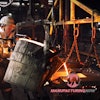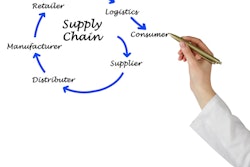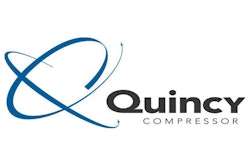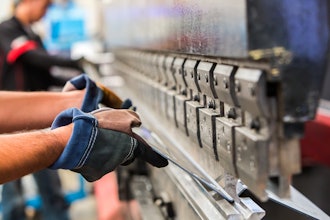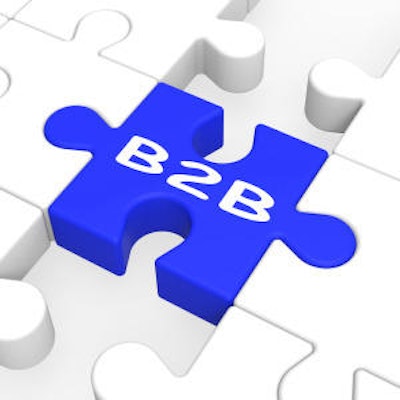
I was speaking at a large conference about the major impacts of globalization, technology, and supply chain on commerce. At the beginning of my presentation I defined commerce to include retail, consumer products, wholesale, and distribution.
At the end of my presentation, someone asked: “I really understand what you are saying for B2C, but is there anything happening in B2B? Is anything you said relevant for B2B?”
My first reaction was, Good question, I really need to help B2B people grasp the magnitude of what is coming their way.
But then the words “is anything happening” and “anything relevant” burst into my mind. To be honest, I was speechless for the first time in many years. I answered the question by explaining how B2B is in as much of a transition as B2C, and everything in my presentation was relevant to both B2B and B2C.
See Jim's previous blog post: Five Major Changes Happening Right Now In Industrial Distribution
Obviously I was totally floored by this question. Over the next few days, I contemplated my response. Now that I’ve (figuratively) gotten up from the floor, I’d like to share what I think is the best answer to that question.
The B2B space is undergoing massive transformation as a result of major changes in customers, distributors, and technology. In fact, every aspect of B2B is changing and B2B players who are doing the same things today as they did 5 years ago will become obsolete.
The first area in B2B where major changes are occurring is with the B2B customer. Today’s B2B customer demands low prices, great experience, very broad selections, and convenience that were considered unachievable only a few years ago:
- Low prices: B2B customers have traditionally not been as sensitive to price as B2C customers. But with the power of the internet and the large number of manufacturing companies selling online, today’s B2B customer is shopping online for prices. A recent survey showed that 61 percent of B2B customers believe product price is extremely important and 31 percent think it is very important. A total of 92 percent of B2B customers feel that price is at least very important. If 92 percent of all B2B customers find their industrial distributor total delivered price is significantly higher than the manufacturer’s price, they will buy directly from the manufacturer (which was not even an option 5 years ago). In addition, most of today’s B2B customers have more than one preferred B2B provider and more than one-third of all B2B customers shop online outside of their existing supply base to ensure competitive pricing. Contrary to traditional B2B thinking, low total delivered price is a critical factor in B2B buying decisions.
- Great experience: It’s clear that today’s B2B customers have very high expectations of their suppliers. This includes everything from real-time product availability and enhanced search to improved product descriptions and streamlined checkout/invoicing. The B2B buying experience includes mobile ordering, ability to see estimated delivery dates, order status, order history, repeat ordering, personalization, workflow management systems and transparent shipping, and return and restocking fees.
- Broad selection: Today’s B2B customers demand a selection of products that is both broader in variety and deeper in offerings. One of the major drivers of B2B mergers and acquisitions is the buying of distributors who offer different products and then integrating these distributorships to offer a broader selection to customers. Another way to achieve a broader selection is by acting as a marketplace. (To understand more about marketplaces, watch the video The Alibaba Effect.) Marketplaces place product offerings on your site for sale even though you do not have any inventory of these items. Orders for these “stockless inventory” items are simply passed to your marketplace partner who drop-ships the products to your marketplace customers. These stockless inventory items can allow you to literally offer an “endless aisle” of product offerings without increasing inventory.
- Convenience: Customers generally equate “convenience” with the ability to order online and the speed at which they can obtain their order. Recent research shows that 67 percent of all B2B customers believe the ability to order from a website is either extremely or very important. B2B customers are like B2C customers in that 25-30 percent is willing to pick up their order. For both pickup and delivery of orders, the speed of delivery is facilitated by having by the “Get Local” concept of having branches near the customer’s location. In fact, 92 percent of all B2B customers say having a physical location where they can easily purchase or pick up product is extremely or very important. In addition, 85 percent of all B2B customers say that having an accurate estimate of the delivery window is extremely or very important.
In addition to B2B customers, industrial distributors have also undergone massive transformations. Just a few years ago, industrial distributors were predominately family-owned businesses built on decades of service and personal relationships. The industrial distribution industry has been highly fragmented, with the sales representatives considered the most important employees who help guide the B2B customer to the products they need. However, due to a combination of the customer wanting to deal with fewer industrial distributors and mergers and acquisitions among industrial distributors, traditional family-owned distributors are becoming a rarity.
Research shows that 68 percent of all B2B customers prefer doing search on distributor websites and only 58 percent of all B2B customers feel having that a sales representative is extremely or very important. In the 2013 white paper “Industrial Distribution at a Crossroads,” we presented the reality that for industrial distributors to continue to be successful, they need to adopt the right strategy, the right technology, and the right supply chain. Failure to do so leads to turmoil and eventually bankruptcy.
Let’s not forgot about the changes in technology too. B2B customers have forced industrial distributors to adapt technology and the industrial distributors themselves have understood and embraced this need for technology. B2B customers rely on technology, from the initial research on what they want to buy all the way to the delivery of their desired products. There is no aspect of creating a happy B2B customer that is not driven by or supported by technology.
A recent UPS report on B2B purchasing Insights concluded that e-commerce needs to be embraced (but not exclusively). Suppliers who are not yet online risk being excluded from consideration by buyers at all spending levels. While traditional selling methods should not yet be abandoned, it is difficult (if not impossible) to compete if you are not present on a platform where the majority of buyers are spending their budgets.
So let’s ask the question again: Is anything happening in B2B? You bet. In fact, as more people grasp the transformational implications of e-marketplace Alibaba, we are left considering the real question: Is there anything in B2B that is not changing?
For more from Jim Tompkins, visit his blog at www.tompkinsinc.com/category/blog/.



